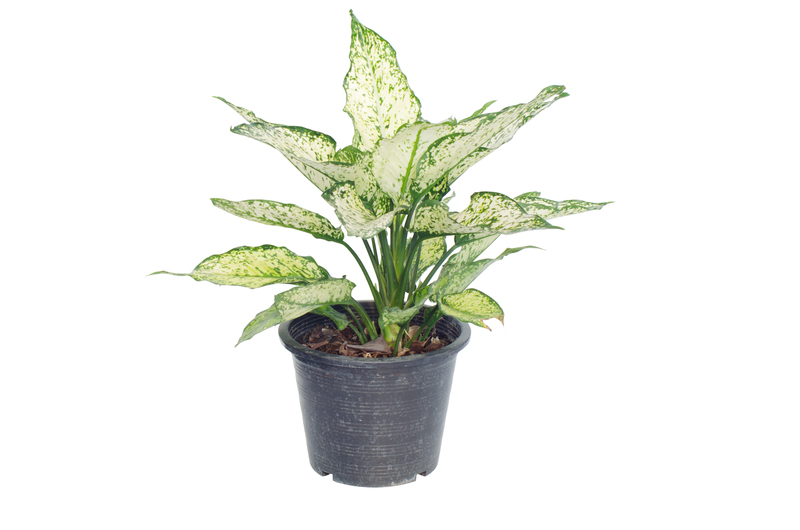Gardening Tips to Build a Playground for Children
Posted on 13/08/2025
Gardening Tips to Build a Playground for Children
Creating a safe and engaging play area in your garden is a wonderful way to encourage children to enjoy the outdoors. By integrating gardening techniques and design with play structures, you can craft an environment that is not only fun but also educational and safe for your kids. In this comprehensive guide, we'll share gardening tips to build a playground for children, helping you create a child-friendly backyard where imagination and nature thrive side by side.

Why Build a Garden Playground for Children?
Kids naturally love to play and explore. Having a dedicated playground in your garden comes with many benefits:
- Physical Activity: Outdoor play structures promote healthy exercise and gross motor skill development.
- Connection to Nature: Gardens teach kids about plants, insects, and ecosystems while fostering environmental stewardship.
- Creativity and Imagination: Natural playgrounds inspire pretend play and creativity.
- Safe Environment: A home garden playground allows you to control safety and maintenance.
- Family Bonding: Gardening projects and outdoor games are wonderful family activities.
Planning Your Garden Playground
Assess the Space
Start by evaluating your backyard. Consider the size and layout--what features do you want, and how much space will they require? Sketch a rough layout, marking sunny and shady areas, uneven terrain, and existing structures.
- Identify flat surfaces for play equipment
- Spot areas with good drainage to avoid muddy patches
- Reserve shaded zones for benches or quiet corners
Set Priorities and Involve Your Children
Talk to your kids about their favorite activities. Do they prefer climbing, swinging, gardening, or imaginative play? Getting them involved in decisions ensures you'll create a child-friendly garden playground they'll love.
- Ask what swings, slides, or playhouses they'd like
- Let them choose garden plants or flowers for their special area
- Encourage them to dream up creative play ideas
Safety First
Child safety is paramount. Opt for materials and designs that are age-appropriate and minimize risk. Here are some garden playground safety tips:
- Use soft ground materials like wood chips, bark, or rubber mulch
- Avoid sharp edges, toxic plants, and splinter-prone wood
- Install enclosures or fences to keep little ones inside the area
- Supervise children, especially near water features or ponds
Choosing Plants for Your Children's Playground Garden
Kid-Friendly Plants
Select non-toxic, low-allergy plants that are safe if touched or accidentally tasted. Thriving in different seasons, these child-friendly options add color and texture:
- Sunflowers: Tall and dramatic, perfect for hiding places or "jungles"
- Lavender: Attractive, fragrant, and known for calming properties
- Strawberries and cherry tomatoes: Edible, fun to pick, and teach where food comes from
- Marigolds: Bright, easy to grow, and bug-repellent
- Pumpkins and beans: Great for teepee tents and shaded hideouts
- Grasses and sensory plants: Lamb's ear and ornamental grasses for tactile fun
Plants to Avoid
- Oleander, foxglove, and yew: All toxic plants
- Thorny or spiny plants: Roses, cacti, or holly can cause scraped skin
- Pollen-heavy plants: Ragweed or similar allergens may trigger hay fever
Design Features for a Children's Playground in Your Garden
Natural Play Elements
Natural features not only harmonize with your garden's aesthetics but also foster imagination and creativity. Consider adding:
- Sand pits or mud kitchens: Ideal for sensory and messy play
- Logs, stumps, and stepping stones: Perfect for balancings and jumping games
- Willow tunnels or living teepees: Grow climbers like beans or willow to create magical hideaways
- Rock gardens or boulders: For climbing and exploring
- Pallet structures: Easy DIY forts, dens, or workbenches
- Raised beds: For children's vegetable or fairy gardens
Classic Playground Equipment
Blending traditional play features with your landscaping adds variety and function:
- Swings: Hang from sturdy trees or purpose-built frames
- Slides: Compact models work in small spaces
- Climbing frames: Wood, rope, or even living plant structures
- Balance beams: Simple logs or planks laid low to the ground
- Trampolines: Consider in-ground options for safety
Include Quiet and Creative Spaces
Not every corner needs to be active! Offer spots for relaxation, reading, or drawing:
- Shaded benches or hammocks under trees
- Storybook nooks hidden by tall plants
- Art corners with chalkboards or easels
- Butterfly gardens to observe pollinators
Maintenance Tips for a Safe and Thriving Playground Garden
Regular Inspections
Check play equipment, fences, and garden beds periodically for hazards. Tighten bolts, sand splinters, and keep soft landing materials refreshed.
Pest and Chemical Control
- Practice organic gardening--avoid pesticides and fungicides near playgrounds
- Encourage natural predators (ladybugs, birds) in the ecosystem
- Remove poisonous mushrooms or unknown plants promptly
Encouraging Healthy Plant Growth
Water and mulch regularly to prevent dry, hard ground. Teach children about plant care, composting, and respect for living things--turning yard work into a shared, fun activity.
Eco-Friendly and Sustainable Playground Ideas
For an environmentally conscious playground, incorporate sustainable materials and conservation practices:
- Recycle old tires for swings or climbing
- Use untreated wood or repurpose pallets
- Install rain barrels for watering garden beds
- Plant native species to attract wildlife and reduce maintenance
Sustainable gardening not only protects the planet but also teaches children about stewardship and responsibility. Create a green playground garden your kids can enjoy for years to come.
Engaging Children in Playground Gardening
A child's playground garden thrives with their participation. Get them involved:
- Let kids sow seeds, water plants, and pick produce
- Assign them responsibility for a "mini plot"
- Designate a "digging area" for free exploration
- Plan scavenger hunts for bugs, leaves, and birds
- Build DIY garden crafts: painted stones, wind chimes, or plant labels
This hands-on engagement helps develop respect for nature, motor skills, independence, and lasting memories.
Creative Playground Themes to Spark Imagination
- Dinosaur Dig: Sand pits with fossil toys and big ferns create a prehistoric world.
- Fairy Garden: Use miniature fairy houses, winding paths, and colorful flowers.
- Woodland Adventure: Ferns, logs, and natural obstacles for exploration.
- Pirate Ship: Old boats or pallet structures with a sand "beach."
- Edible Maze: Hedges or tall sunflowers make a delicious, living labyrinth.
Whether your style is whimsical, wild, or educational, themed playground gardens help kids immerse themselves in imaginative play.
Keeping Your Garden Playground Safe Through the Seasons
- Spring: Check for winter damage; plant new beds for color and interest.
- Summer: Provide shade sails, water features, and regular hydration for both plants and kids.
- Autumn: Rake leaves, refresh ground cover, and protect tender plants from frost.
- Winter: Store movable equipment, clear slippery surfaces, and use LED lighting for safety.

Conclusion: Build Lasting Memories with a Children's Garden Playground
Creating a garden playground for your children is a project that yields rewards for years to come. With the right planning, thoughtful plant choices, safe and stimulating play features, and sustainable materials, you'll foster an environment where kids can grow, learn, and flourish alongside the natural world.
By following these gardening tips for building a playground for children, your backyard will transform into a haven of adventure and tranquility--a space where technology takes a back seat, and the wonders of nature and play come to the forefront. Why not start planning your own kid-friendly garden play area today?
Frequently Asked Questions (FAQs): Gardening for Children's Playgrounds
1. What are the best plants to use in a child's playground garden?
- Choose non-toxic, low-maintenance, and sensory-engaging plants like sunflowers, strawberries, lavender, and marigolds.
2. How can I ensure my garden playground is safe?
- Install soft ground covers, avoid dangerous plants, and regularly inspect equipment.
3. How do I involve my children in maintaining the garden playground?
- Assign age-appropriate tasks, offer their own mini-garden, and make maintenance fun with games and creative activities.
4. What sustainable materials should I use?
- Repurpose pallets, use recycled rubber, and choose untreated eco-friendly wood where possible.
5. How do I design a playground for small gardens?
- Focus on vertical gardening, multi-use play structures, and compact sand pits or mud kitchens.
With these playground gardening ideas at your fingertips, you're ready to create a backyard space where children are free to grow, discover, and play in harmony with nature.

